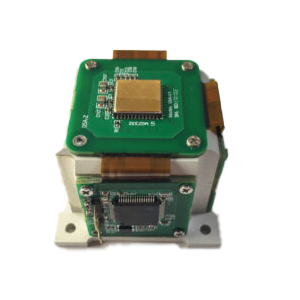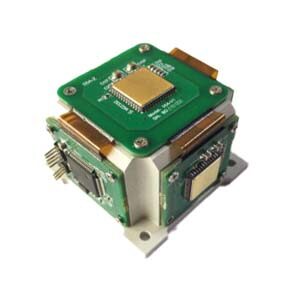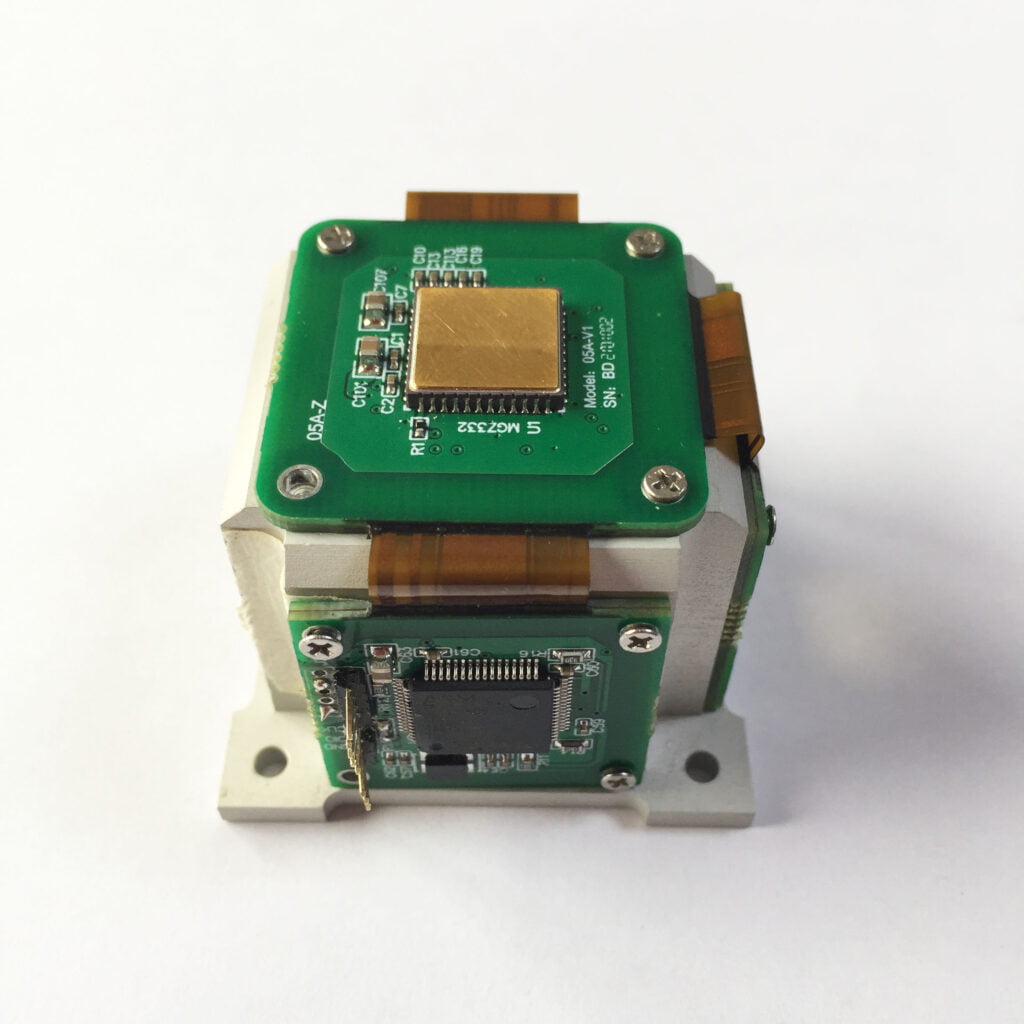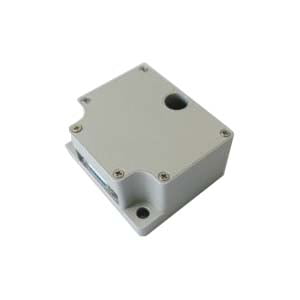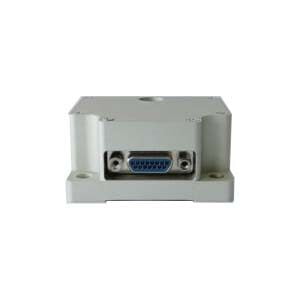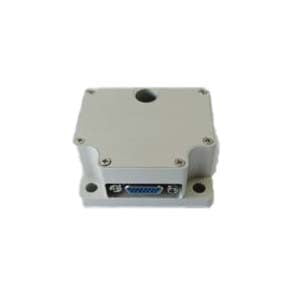The inertial measurement unit is a device that measures the three-axis attitude angle (or angular rate) of the object and the acceleration. In general, an IMU includes three single-axis accelerometers and three single-axis gyros. The accelerometer detects an acceleration signal of an independent three-axis of the object in the carrier coordinate system, and the gyro detects the angular velocity signal of the carrier relative to the navigation coordinate system. The angular velocity and acceleration of the object in three-dimensional space are measured, and the posture of the object is calculated. It has important application value in navigation.
What is IMU?
An inertial measurement unit (IMU) is a device that measures the three-axis attitude angle (or angular rate) and acceleration of an object. It is composed of 3 accelerometers, 3 gyroscopes, and depending on the heading requirement – 3 magnetometers. That is to say, one per axis for each of the three vehicle axes: roll, pitch, and yaw.
For increased reliability, more sensors can also be equipped for each axis. In general, the IMU is mounted on the center of gravity of the object to be measured.
Inertial Measurement Unit Application:
History began with the applications in air vehicle to measure position in the aircraft, the IMU technology now has expanded into various areas such as medical devices, robotics, land vehicle navigation, etc.
In fact, the mobile phones we use every day, the cars, airplanes, and even missiles and spaceships that we use when we travel all use IMU. The difference lies in cost and accuracy. According to different usage scenarios, there are different requirements for the accuracy of the IMU.
High accuracy also means high cost. Here, we take the Ericco's MEMS IMU as an example:
The low-precision IMUs ER-MIMU-04 and ER-MIMU-08 are low-cost and can be used for stability control.
IMU ER-MIMU-03 and ER-MIMU-07 can be used for integrated navigation, such as unmanned cars, drones, unmanned ships, etc. The price will be higher because the required accuracy is higher than that of low-precision MEMS IMUs.
The high-precision IMUs ER-MIMU-01 and ER-MIMU-05 are dedicated to north-seeking, such as radar, antenna, military vehicles, and other fields. IMU ER-MIMU-02 and ER-MIMU-06 can be used for high-precision inertial/integrated navigation, such as drones, missiles, etc. Taking the missile as an example, from the missile launch to the target, the aerospace-grade IMU can achieve extremely high-precision calculations, and the error can even be less than one meter.
Background technology
The use of three-axis geomagnetometer combined with three-axis accelerometer, greatly affected by external force acceleration, in the motion / vibration and other environments, the output direction angle error is large, in addition to the disadvantages of the geomagnetic sensor, its absolute reference is the magnetic field line of the geomagnetic field, geomagnetic is characterized by a large range of use, but the intensity is low, about a few tenths of a gauss, very susceptible to interference from other magnets, if the instantaneous angle of the Z-axis gyroscope is fused, the system data can be more stable. The acceleration measures the direction of gravity, and in the absence of external force acceleration, it can accurately output the ROLL/PITCH two-axis attitude angle and this angle will not have cumulative error, which is accurate in longer time scales. However, the disadvantage of the acceleration sensor angle measurement is that the acceleration sensor actually uses MEMS technology to detect the small deformation caused by the inertial force, and the inertial force and gravity are essentially the same, so the accelerometer will not distinguish between gravitational acceleration and external force acceleration, and its output is incorrect when the system does variable speed movement in three-dimensional space.
The gyroscope output angular velocity is an instantaneous amount, and the angular velocity cannot be used directly in the attitude balance, and the angular velocity and time integration are needed to calculate the angle, and the amount of angle change obtained is added to the initial angle to obtain the target angle, where the smaller the integration time Dt, the more accurate the output angle, but the principle of the gyroscope determines that its measurement reference is itself, and there is no absolute reference outside the system, plus Dt is impossible to be infinitely small, so the cumulative error of the integral will increase rapidly with the passage of time, As a result, the output angle does not match the actual situation, so the gyroscope can only operate on a relatively short time scale.
Ericco has different types of IMU sensors: the one based on FOG (Fiber Optic Gyroscope), like ER-FIMU-50,it has the following main features:
1. Minimum FOG IMU: F89mm*73mm; similar performance to KVH 1775, LN200;
2. Gyro-Bias stability/repeatability: 0.5°-1°/h, accelerometer-25g;
3. For navigation, control and dynamic measurement.
the IMU based on MEMS technology (Micro Electro-Mechanical Systems). This technology allows lower costs and low power requirements while ensuring performance. MEMS-based systems therefore combine high performance and ultra-low power in a smaller unit. MEMS IMU products and applications have been mentioned in detail above.
How it works?
Inertial measurement device IMU belongs to the strap-down inertial guide, the system has three acceleration sensors and three angular velocity sensors (gyroscope) composition, accelerometer is used to feel the acceleration component of the aircraft relative to the vertical line, angular velocity sensor is used to feel the angle information of the aircraft, the sub-component mainly has two A/D converters AD7716BS and 64K E/EPROM memory X25650 composition, A/D converter using IMU sensor analog variables, After converting to digital information, after CPU calculation, the final output of aircraft pitch angle, tilt angle and sideslide angle, E/EPROM memory mainly stores the linear curve of each sensor of the IMU and the part number and serial number of each sensor of the IMU, the part is just booted, the image processing unit reads the linear curve parameters in the E/EPROM to provide initial information for subsequent angle calculation.
What Difference between an IMU, an AHRS, and an Inertial Navigation System?
An IMU combines gyroscopes and accelerometers. An Attitude and Heading Reference System (AHRS), also called a motion unit, adds a central processing unit (CPU) that embeds the Extended Kalman Filter to calculate attitude with heading relative to magnetic north.
Inertial Navigation Systems are composed of an IMU and additionally embed a GPS/GNSS receiver. An INS fuses inertial, navigation, and aiding data (odometer, DVL, etc.) thanks to the Extended Kalman Filter. This GNSS and IMU sensor fusion provides roll, pitch, heading, position, and velocity.
If you want to get more details about inertial measurement unit, pls visit us.
More Technical Questions
1.Application of IMU in UAV Flight Control System
2.What are the Components in IMU?
3.Easy to Understand IMU Explanation
4.Navigation IMU? North Seeking IMU?There is Always One for You
5.Do You Know What IMU is?
6.Do You Know the Navigation-level MEMS IMU?
Products in Article
